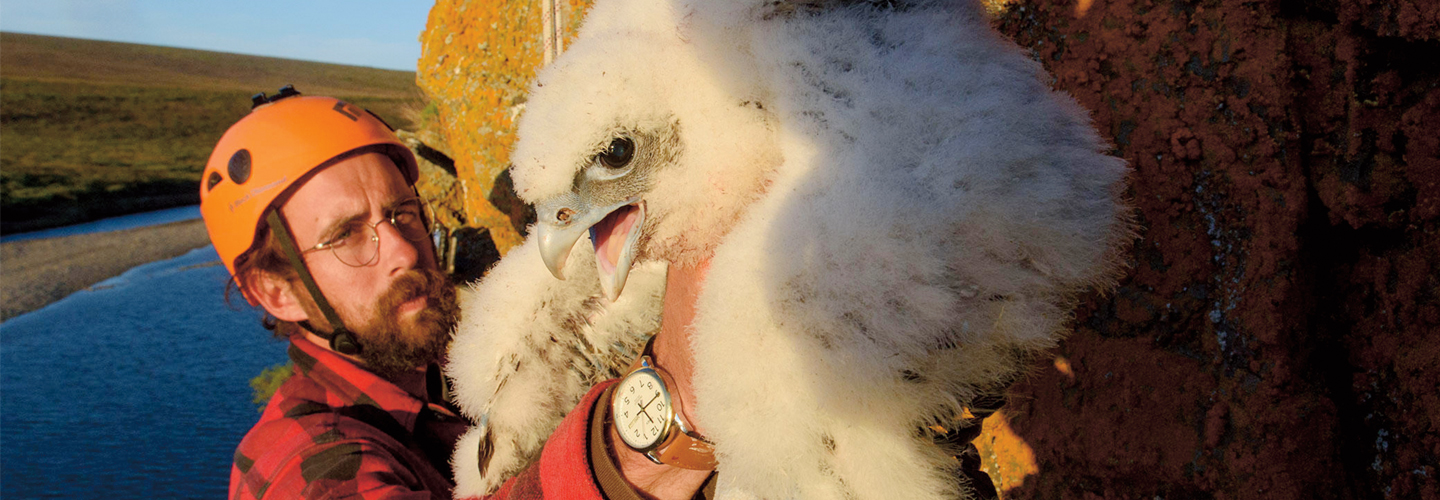High on a cliff in the Alaskan tundra, a baby gyrfalcon was about to die. The bird’s nest was collapsing, which would send the chick tumbling hundreds of feet below. Luckily, its mother gently picked up the chick in her beak and flew it to a safe place just in time.
Bird researcher Bryce Robinson didn’t see this happen in person. But his camera filmed it in 2015. It was the first time this sort of behavior was recorded in a bird species. “It’s unique and exciting,” Robinson says. At the time, he was studying bird biology at Boise State University in Idaho.
Gyrfalcons are the largest falcon species on the planet. Adults have wingspans of 4 feet. They live in the tundra regions of North America, Europe, and Asia.
High on a cliff on the Alaskan tundra, a baby gyrfalcon was about to die. The bird's nest was collapsing. This would send the chick tumbling hundreds of feet below. Luckily, its mother gently picked up the chick in her beak. She flew it to a safe place. It happened just in time.
Bird researcher Bryce Robinson didn't see this happen in person. But his camera filmed it in 2015. It was the first time this sort of behavior was recorded in a bird species. "It's unique and exciting," Robinson says. At the time, he was studying bird biology at Boise State University in Idaho.
Gyrfalcons are the largest falcon species on the planet. Adults have wingspans of 4 feet. They live in the tundra regions of North America, Europe, and Asia.

